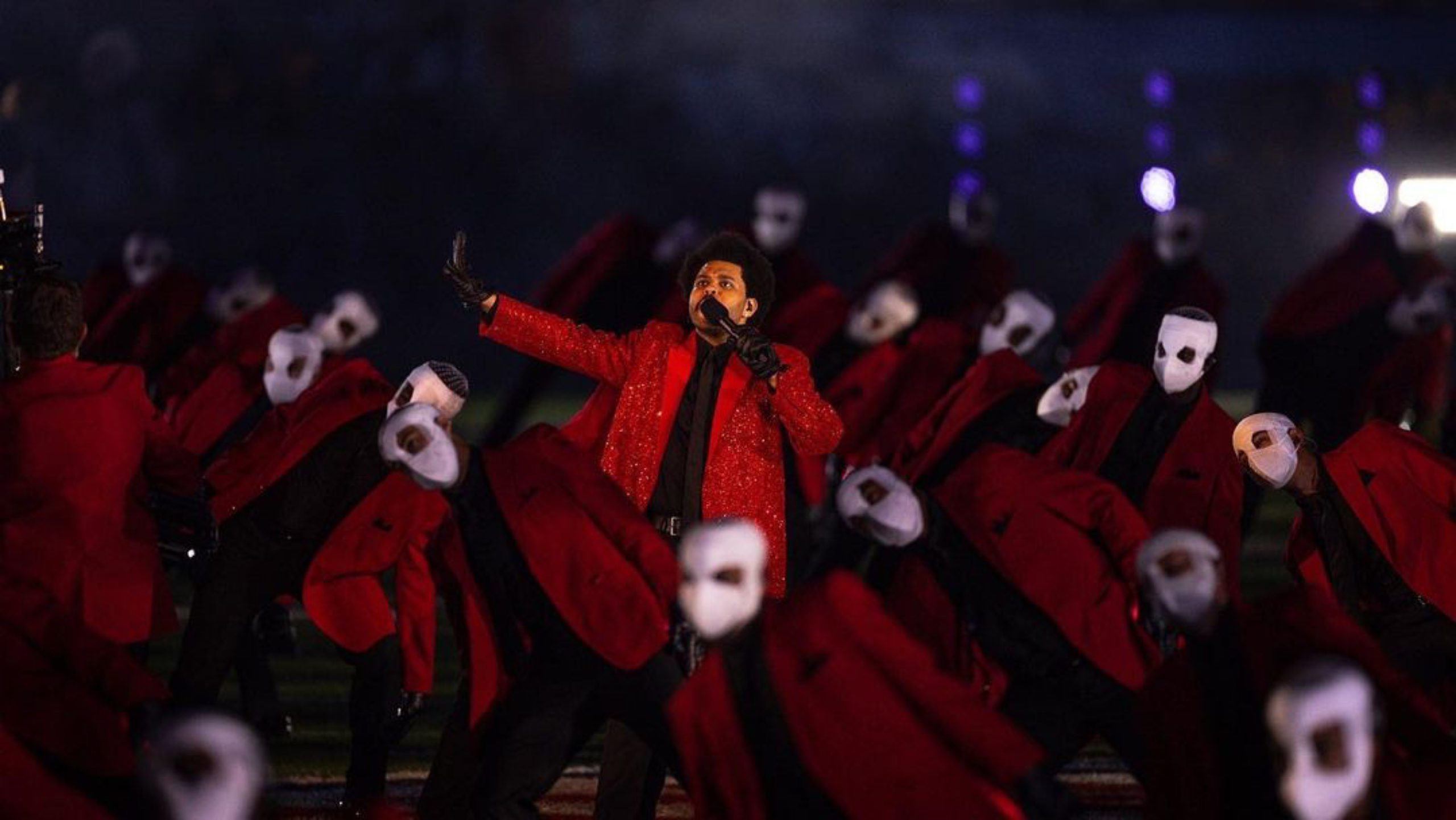Feb 7, 2021, A Jumbotron at Tampa Bay during the Super Bowl LV Halftime Show opened up to reveal blinding lights and one of the most prolific Pop/RnB singers of the last 2 decades: The Weeknd. Whether you are a huge fan of the falsettoed crooner extraordinaire, or simply wanted to continue watching the Bucs take on the Chiefs for the Lombardi Trophy, we believe it’s worth recognizing the music theory and athletic ability that it takes to be able to sing, continue to support your voice, and move around a huge stage like the Weeknd proved he can do!
Abel Makkonen Tesfaye (born in 1990), known professionally as the Weeknd, is a Canadian singer, songwriter, and record producer. He has won three Grammy Awards, five American Music Awards, nine Billboard Music Awards, two MTV Video Music Awards, nine Juno Awards, and has been nominated for an Academy Award. However, this performance was something extremely important to Abel, as controversy over his Grammy Nominations snub, despite his critically acclaimed album “After Hours” sweeping award shows left and right alongside being one of the most commercially successful albums of 2020, is being attributed to him choosing the Super Bowl performance over the famed music award show. Abel wanted to prove that his performance was worth the lack of nominations, and cement himself as a staple in pop music for decades to come. There were no pulled punches as the Weeknd masterfully combined true vocal and physical athleticism with the psychedelic, hedonistic visual aesthetic surrounding his most recent and largest project to date.
Abel opened the world wide celebrated event that evening with a choir acapella version of his song “Call Out My Name”, connecting the last note perfectly with the root of the Daft Punk co-produced hit “Star Boy”. Abel has talked in the past about being influenced heavily by Michael Jackson, and we find him here hitting high notes in between lines that are not in the recording, in a similar way to what Michael (who also had an incredible Halftime Show) used to do live. The parallels are hard to miss.
The show continued with a pause that lasted only two bars and transitioned into his single “The Hills”. In this song we can clearly notice that he is not using any auto-tune or effects on his voice, Abel’s vocal performance is raw and it’s live. (The most obvious cue-in on this is in the occasionally spotty mic levelling at the beginning of the performance as well, which was joked about heavily on social media.) To execute this performance live is something of an accomplishment in its own right! We also hear a powerful guitar coming in on a heavy hitting chorus followed up by a “four on the floor” rhythmic transition, without any stop, the band moves on to the billboard hit “Can’t Feel my Face”. This song took place in what seems to be a tunnel featuring aesthetics and choreography from “Heartless”, while effortlessly transitioning into “I Feel It Coming”, a song also produced by the legendary electronic music duo, Daft Punk.
In this part of the show we can hear a key change from A minor to Eb major, Abel takes a big breath that once again makes it obvious that he is performing live. In a medley like this, the artist has to practice where all of the breaths come in, while moving around that much. Abel is on top of all the cues and makes it look easy, another reason why he keeps getting compared to Michael Jackson.

The sixth song was “Save Your Tears”, which started right after the previous song and was followed up by a strings transition, a common yet smart approach to change the meter in a non-abrupt way, in this case changing from a 4/4 song into the next one, “Earned It” a song in 6/8.
“Earned It” had an extended ending with rhythmic hits that led into one of the tunes that put The Weeknd on the map, “House of Balloons / Glass Table Girls”. The song started acapella with a huge choir dancing in the football field while the percussion kept a steady backbeat that built up gradually into the new tempo of Abel’s newest and most successful single “Blinding Lights”.
For the fans, putting these two songs together in a medley expressed the transition of how his career started to how it’s progressing. It also showed the artist’s vision fully realized, as he reportedly paid over $7 million dollars out of pocket to assist in the production of the show to match his vision perfectly. The artist truly wants to show his mastery over live vocal performance, and the importance of always having a hand in the creative vision of all endeavors as an artist. This Halftime Show was proof that when the artist is passionate about their performance, they can accomplish amazing feats, including creating what most are calling one of the greatest Halftime performances in recent history.
***






